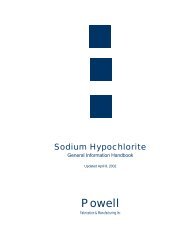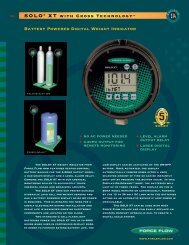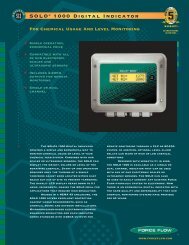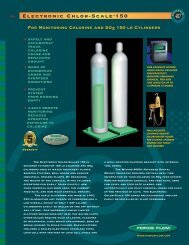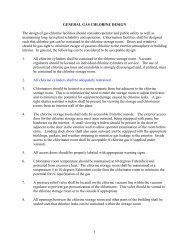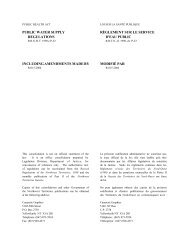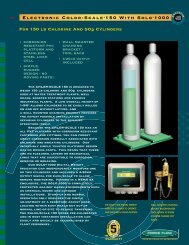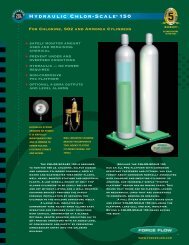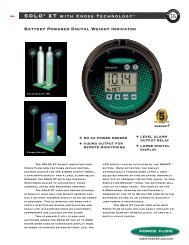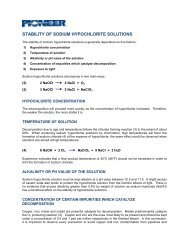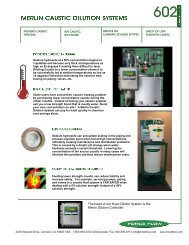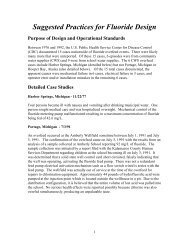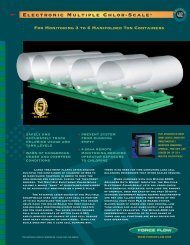Montana DEQ - Circular DEQ 2 - Design Standards for ... - Force Flow
Montana DEQ - Circular DEQ 2 - Design Standards for ... - Force Flow
Montana DEQ - Circular DEQ 2 - Design Standards for ... - Force Flow
You also want an ePaper? Increase the reach of your titles
YUMPU automatically turns print PDFs into web optimized ePapers that Google loves.
Chapter 100Disinfection102.45 Piping and ConnectionsPiping systems should be as simple as possible, specifically selected andmanufactured to be suitable <strong>for</strong> chlorine service, with a minimum number ofjoints. Piping should be well supported and protected against temperatureextremes.Due to the corrosiveness of wet chlorine, all lines designated to handle drychlorine must be protected from the entrance of water or air containingwater. Even minute traces of water added to chlorine results in a corrosiveattack. Low pressure lines made of hard rubber, saran-lined, rubber-lined,polyethylene, polyvinylchloride (PVC), or other approved materials aresatisfactory <strong>for</strong> wet chlorine or aqueous solutions of chlorine.102.46 Standby Equipment and Spare PartsStandby equipment of sufficient capacity should be available to replace thelargest unit during shutdowns. Spare parts must be available <strong>for</strong> alldisinfection equipment to replace parts that are subject to wear andbreakage.102.47 Chlorinator Water SupplyAn ample supply of water must be available <strong>for</strong> operating the chlorinator.Where a booster pump is required, duplicate equipment should be provided,and, when necessary, standby power as well. Protection of a potable watersupply must con<strong>for</strong>m to the requirements of Section 56.2. Adequatelyfiltered plant effluent should be considered <strong>for</strong> use in the chlorinator.102.48 Leak Detection and ControlsA bottle of 56 percent ammonium hydroxide solution must be available <strong>for</strong>detecting chlorine leaks. Where ton containers (909 kg) or tank cars areused, a leak repair kit approved by the Chlorine Institute must be provided.Consideration should be given to the provision of caustic soda solutionreaction tanks <strong>for</strong> absorbing the contents of leaking one-ton (909 kg)containers where such containers are in use. At large chlorinationinstallations, consideration should be given to the installation of automaticgas detection and related alarm equipment.146



